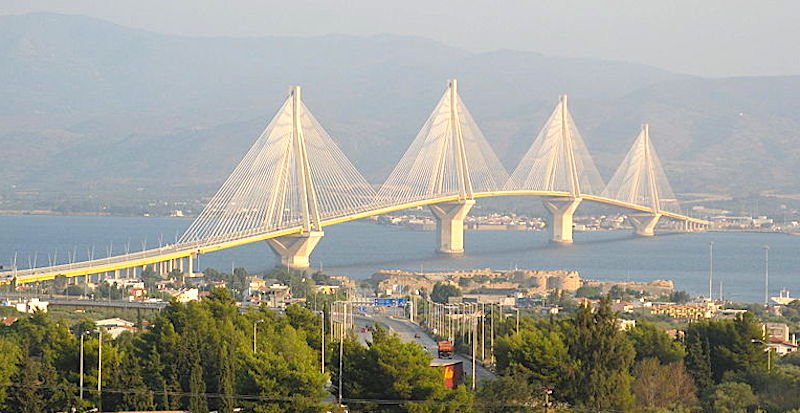In 2004, the Rio-Antirrio bridge was opened to the public, linking Central Greece to Peloponnese and drastically reducing travelling times for those crossing between the two regions.
Here are five facts you should to know about Greece’s modern engineering marvel:
1. The bridge connects the cities of Rio, a suburb near the city of Patra, to Antirrio, a small village that belongs to the Municipality of Etoloakarnania and is located southeast of Mesolloggi and southwest of Nafpaktos. That is how the structure received its unofficial name.
2. Its true name is the “Charilaos Trikoupis” bridge, given to it by the former President of the Hellenic Republic Karolos Papoulias back in May 2007 during an event dedicated to its official reveal towards the public.
3. The length of the bridge is over 2,000 metres (2,252), which grows to an impressive 2,883 metres if the vehicle entrance and exit points are added. It is based of four pylons and has been built to remain sturdy even under the worst conditions, such as an earthquake that hits 7.4 on the Richter scale or a collision with a 180,000-tonne tanker.

4. Despite its late delivery by the manufacturers, the bridge was in time to participate in the festivities for the 2004 Olympic Games. The torch-bearers crossed Rio-Antirrio on their way to Athens, putting this new marvel under the world’s spotlight. One of the most well-known figures who was also the first to cross the bridge during that event was the former Greek football team national coach Otto Rehhagel.
5. The construction of the bridge was the item of high criticism from many publications from around Europe, not only due to its high cost (Rio-Antirrio placed a burden of over 630 million Euros on the Greek economy), but also on the location upon which it was built. More specifically, as The Economist pointed out, there was no real purpose for the structure to be placed in the middle of nowhere. However, a few years later, the presence of the Rio-Antirrion bridge gave the Greek government the incentive they needed in order to invest in other nearby highways, such as the Ionian Odos and the Olympian Odos, offering drivers much safer travelling routes.
Sources: Wikipedia and Structurae.

